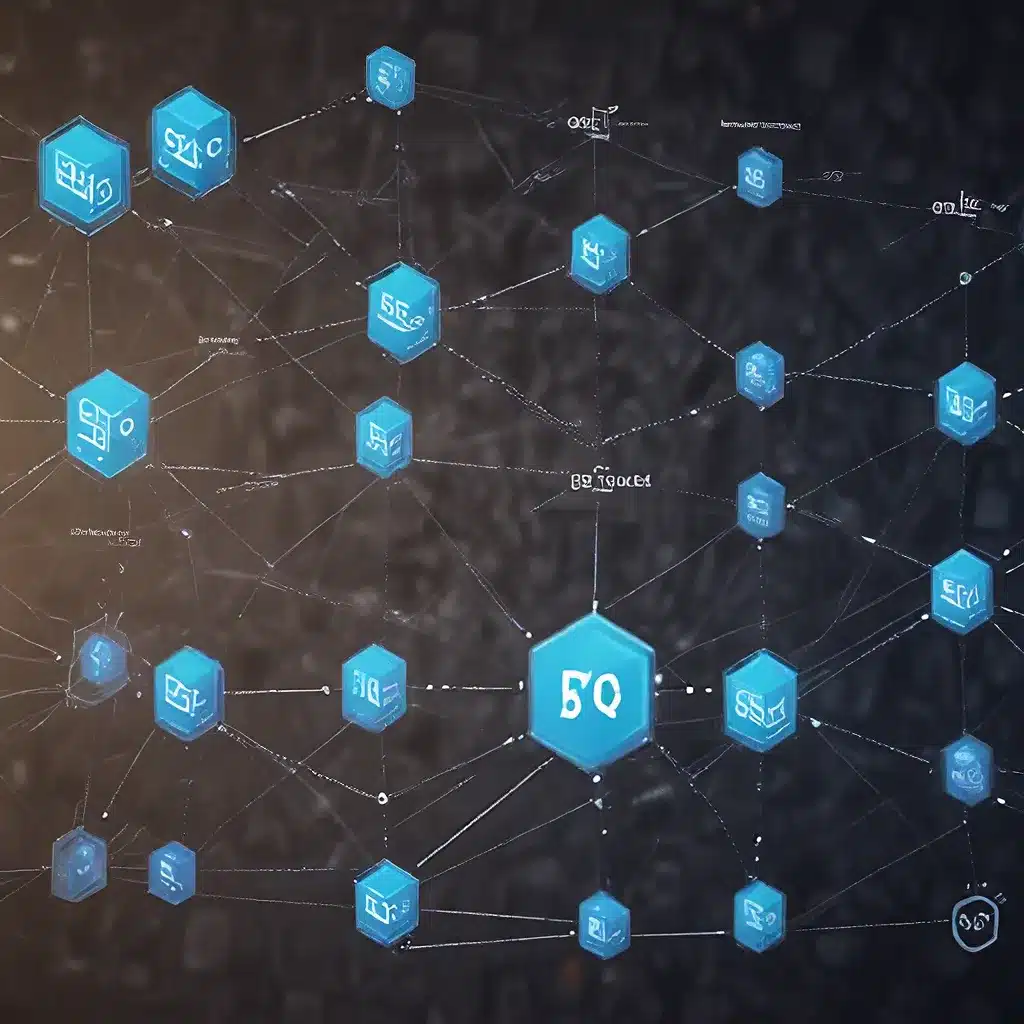
In the rapidly evolving landscape of the Internet of Things (IoT), the role of sensor networks has become increasingly crucial. These interconnected webs of intelligent devices collect, process, and transmit vast amounts of data, transforming the way we interact with and understand our physical environments. As the IoT ecosystem continues to expand, the need for secure and transparent sensor data management has never been more pressing.
The Challenges of Sensor Network Design
Designing effective sensor networks is a complex undertaking, requiring careful consideration of numerous factors. Network topology, energy management, and data security are just a few of the key challenges that must be addressed to ensure the reliable and efficient operation of these systems.
Network Topology: The choice of network topology can have a significant impact on the overall performance and resilience of a sensor network. From centralized architectures to decentralized and mesh networks, each approach offers unique advantages and trade-offs in terms of scalability, fault tolerance, and communication efficiency.
Energy Management: Sensor nodes are often battery-powered or rely on energy-harvesting technologies, making energy efficiency a critical design consideration. Strategies such as duty cycling, power-aware routing, and energy-efficient data aggregation can help extend the operational lifespan of sensor networks and reduce maintenance costs.
Data Security: The sensitive nature of the data collected by sensor networks, combined with the inherent vulnerabilities of IoT devices, makes data security a paramount concern. Implementing robust encryption, authentication, and access control measures is essential to protect against cyber threats and ensure the privacy of sensor data.
Distributed Consensus Algorithms for Secure Sensor Data Management
To address these challenges, researchers and practitioners have turned to distributed consensus algorithms as a promising approach for secure and transparent sensor data management. These algorithms leverage the decentralized nature of sensor networks to establish trustless and tamper-resistant data management processes.
Blockchain-based Sensor Data Management
One of the most prominent applications of distributed consensus algorithms in sensor networks is blockchain technology. By leveraging the immutable and transparent properties of blockchain, sensor networks can securely record and share sensor data without the need for a centralized authority.
Blockchain-based sensor data management enables peer-to-peer data sharing, auditability, and tamper-resistance, making it well-suited for critical infrastructure, supply chain monitoring, and smart city applications.
Consensus Mechanisms for Sensor Networks
The choice of consensus mechanism is a crucial design decision in blockchain-based sensor data management. Proof-of-Work (PoW) and Proof-of-Stake (PoS) are two widely adopted consensus algorithms, each with its own advantages and trade-offs in terms of security, scalability, and energy efficiency.
Proof-of-Work is known for its robust security but can be energy-intensive, making it less suitable for resource-constrained sensor nodes. Proof-of-Stake, on the other hand, offers improved energy efficiency and faster transaction times, but may be more vulnerable to 51% attacks in certain scenarios.
Emerging consensus mechanisms, such as Proof-of-Authority (PoA) and Directed Acyclic Graph (DAG)-based approaches, are also being explored to address the unique requirements of sensor networks, including low latency, high throughput, and energy efficiency.
Distributed consensus algorithms can also be leveraged to coordinate sensor node behavior, optimize resource utilization, and ensure data integrity in the absence of a central control entity.
IoT Applications and Security Considerations
The application of sensor networks and IoT technologies spans a wide range of industries, each with its own unique security and privacy requirements. From smart cities and industrial automation to healthcare and environmental monitoring, sensor networks play a crucial role in gathering and analyzing real-time data to drive informed decision-making and operational efficiency.
Healthcare IoT, for example, has seen a surge in the deployment of wearable sensors and connected medical devices to monitor patient health, manage chronic conditions, and improve care outcomes. Ensuring the security and privacy of sensitive health data is paramount in this domain, necessitating the adoption of robust encryption, access control, and data governance measures.
In the smart city domain, sensor networks are used to optimize traffic flow, monitor air quality, and enhance public safety. Here, the integrity and availability of sensor data are critical, as disruptions or cyber attacks could have widespread consequences for urban infrastructure and public well-being.
Secure and transparent sensor data management is essential in these and other IoT applications, as it helps to build trust, ensure regulatory compliance, and mitigate the risk of data breaches and system failures**.
Energy-Efficient Sensor Network Design
As sensor networks continue to proliferate, energy efficiency has become a critical design consideration. Sensor nodes are often deployed in remote or hard-to-reach locations, making battery replacement or recharging a challenging and costly undertaking.
Energy-harvesting technologies, such as solar, thermal, and kinetic energy harvesting, can help to extend the operational lifespan of sensor nodes and reduce the need for frequent maintenance. Duty cycling, which involves periodically powering down sensor nodes when not in use, can also contribute to significant energy savings.
Power-aware routing algorithms and data aggregation techniques are other strategies that can be employed to optimize energy consumption in sensor networks. By minimizing the amount of data transmitted and routing traffic along the most energy-efficient paths, these approaches help to prolong the overall network lifetime.
The Future of Secure and Transparent Sensor Data Management
As the IoT ecosystem continues to evolve, the role of sensor networks in driving data-driven decision-making and transforming industries will only become more pronounced. Distributed consensus algorithms, blockchain technology, and energy-efficient design will play a critical role in shaping the future of secure and transparent sensor data management.
By leveraging the inherent properties of decentralized systems, sensor networks can enhance data security, ensure transparency, and foster trust in a wide range of IoT applications. As these technologies mature and become more widely adopted, we can expect to see increased resilience, improved privacy, and greater operational efficiency in the sensor networks of tomorrow.
The sensor network industry is poised for continued growth and innovation, as researchers, engineers, and industry leaders collaborate to address the evolving challenges and opportunities presented by this dynamic and transformative field.